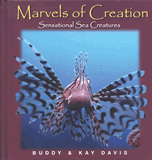The triggerfish live mainly in the tropical coastal waters. Its name is derived from its unusual dorsal locking spine on its back. This spine remains erect until the spine behind it is depressed. When the triggerfish takes refuge and hides in the crevice of a rock, it locks its spine and can’t be pulled out.
Looking at it from its side, the triggerfish appears broad and diamond-shaped. Looking from the front, it looks compressed and very thin. When threatened, it can give the illusion of changing from a large fish to a small one by simply changing the direction it’s viewed from. About one-third of the triggerfish’s body is head. The eyes are fairly large and the mouth is small.
The teeth of the triggerfish consist of eight teeth in each jaw. It feeds on clams, shells of mussels, oysters, crabs, carrion, and many other crustaceans. Its chiseled teeth are used to cut holes in the shells. Some species of triggerfish use their teeth to make sounds by grinding them together.
Triggerfish swim slowly through the water by flapping their dorsal and anal fins. God certainly used His creative genius when He colored the triggerfish. They have an array of bold colors and striking patterns. Some scientists believe they are so colored to ward off predators.
The spine of the triggerfish is thought to stick in the mouth and throat of their predators. Triggerfish can inflict very painful bites to fishermen that handle them. It is believed that these slow-moving fish can defend themselves pretty well. Some species can make sounds by grinding their teeth while others rub together the fin spines. As in all kinds of fish, their sounds are amplified by resonance in their swim bladder.
Some species of the triggerfish are very popular for aquariums such as the clown triggerfish. They are carnivorous so it is best to keep them alone or with larger fish.
Triggerfish
Tetraodontiformes • Balistidae
Balistes capriscus
Length: 2 feet long (61 cm)
Lifespan: Unknown
Special Design Feature: The dorsal fin on the
back of the triggerfish is a locking device. When
the triggerfish hides in the crevices, it locks its
fin and is almost impossible to dislodge.
Did You Know? Viewing the broad,
diamond-shaped triggerfish sideways makes
it appear large. If the fish turns and faces its
predators, it becomes as thin as some seaweed.

Marvels of Creation: Sensational Sea Creatures
Brings the world of the sea alive in a unique and colorful way with photographs, a page of facts and commentaries.
Browse Kids BookRecommended Resources
- © 2025 Answers in Genesis
- Privacy Policy
- Contact
- About



